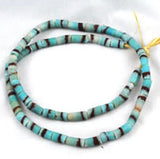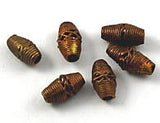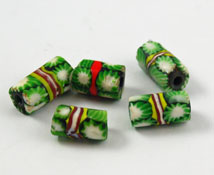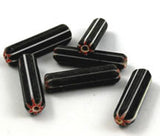Beads are among the most common objects that have been traded in our earliest civilizations. They were long considered valuable possessions and were often buried with other treasures. Beads have been made by every culture for thousands of years and were being produced in Africa for trade and commerce long before Westerners brought their imported goods.
When sellers and collectors talk about "African Trade Beads" they are most often referring to European Glass Beads, such as the Venetian Chevron (Star beads), millefiori, prosser and Russian Blues. These are among the most beautiful, recognizable and collectible of all of the "African Trade Beads". In the 18 & 19th century beads from Italy, Venice, Holland, Bohemia and other European cities began flooding into Africa. They were commonly taken to Africa on trade routes and used there as gifts and trade for Slaves and natural resources. These are among the most desirable beads and they began making their way back to the USA and Europe in the 1960's.
The beads in the main picture are antique Venetian black beads with a prominent ruffled white belt. Traded to the Igbo of Nigeria. This type of bead is often called Dog Teeth or Dog Tooth beads.
Beads are still being produced in Africa today and some of these types are included in the "African Trade Bead" category. They are generally undervalued and but are still lovely and collectible. Some of the most common are sandcast glass beads and metal beads made using the lost wax technique. The process of making sandcast beads is unique to Africa and has been used for over 1000 years. Pulverized glass of various colors is poured into a clay mold, using a cassava stem for the bead's hole. The mold is placed in a furnace and heated until the glass particles congeal without actually melting and the stem burns out. The Ghananians have been making beads in this manner since the 1600s.






